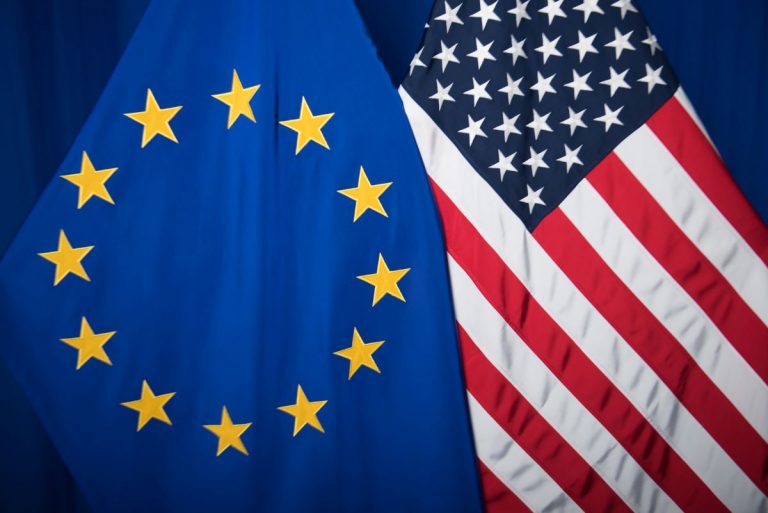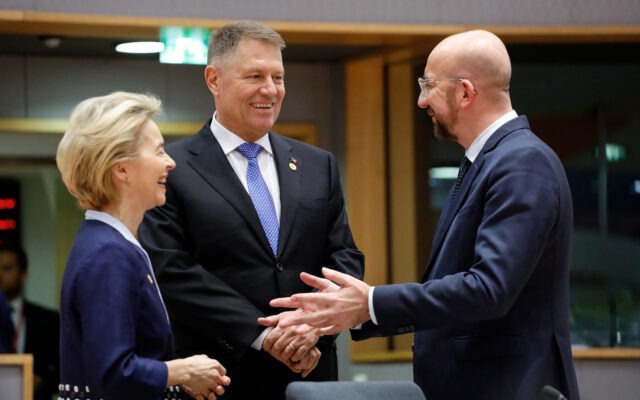
EXCLUSIVE: Behind the scenes of the ‘Air Schengen’ affair: How the US got involved in the negotiations with Vienna and the scenarios for taking over migrants from Austria – sources
Joining the Schengen Agreement with airports only in a first phase is a small step for the Romanians, but a significant break in the Austrian veto. The partial unblocking of the situation was caused by several factors: direct political pressure from Romania, lobbying by US and EU partners, but also pressure from the business community, diplomatic sources told G4Media.ro.
Urmărește cele mai noi producții video G4Media
- articolul continuă mai jos -
According to them, the Government now has to play its cards openly in a very delicate matter: Austria’s demands for taking over migrants seeking asylum.
What does entering Schengen with only airports mean in practical terms? It’s the easiest part of the process of joining the free movement area because airports already have complex control systems in place. If Romania enters Schengen with its airports (the so-called Air Schengen), Romanian passengers will no longer have to go through passport control for flights within the EU. However, they will need to identify themselves at check-in, just like all other EU citizens. The thorniest issue, however, is road transport, where controls that lead to endless queues will be maintained.
Austria’s condition on taking back migrants seeking asylum – a thorny issue
One of the conditions set publicly by the Austrian Interior Minister for the partial veto waiver was that the readmission of asylum seekers coming to Austria via Romania and Bulgaria should be allowed. In other words, Austria wants to share the burden of illegal migrants seeking asylum with Romania and Bulgaria. There are two possible solutions to this issue and we need to see explicitly what Austria’s demand is.
If it is strictly a question of migrants who have come to seek asylum in Austria after having passed through Romania, then Bucharest taking them over is an obligation assumed by the Dublin Regulation, which sets out the criteria for the countries competent to process an asylum application. Romania is a party to this agreement and is thus obliged to receive migrants who have crossed its territory and arrived in Austria, where they have applied for asylum.
If, however, migrants have arrived in Austria without having passed through Romania, Bucharest has no formal obligation towards them. If Austria still insists that Romania take a quota, the Ciolacu government must come out publicly and explain this. Any decision on the admission of migrants to Romania is an extremely sensitive one, which can fuel xenophobic discourse and anti-European rhetoric, so a decision cannot be taken after non-transparent negotiations.
It should also be noted that Austria’s demands for border tightening and readmission of asylum seekers are also intended to give the domestic public a reason for the Nehammer government’s change of position. It is to be expected that these demands will only be a starting point and that Vienna will be flexible in the negotiations.
US lobby
The United States has begun to plead Romania’s case during the course of this year, as Austrian publication Der Standard has written. The reason? Romania is a key bridgehead for the US regarding Ukraine, but also a key ally in the Black Sea region. In addition, in the run-up to Ukraine’s reconstruction effort, a Romania separated from the rest of the EU by border controls will seriously hamper the transport of materials, machinery and workers.
Romanian officials and diplomats insisted in Washington, according to G4Media.ro sources, that the US use its special relationship with Austria to plead the Schengen cause. And this has happened, on the Washington – Vienna – Brussels – Bucharest route.
A key figure in the talks was James C. O’Brien, the US Assistant Secretary of State for Europe, who knows Romania closely because he coordinates bilateral efforts to support Ukraine. He was in Austria and Romania last week: in Vienna he took part in the US-Austrian strategic dialogue, in Tulcea he attended the sixth meeting of the Romania-Ukraine-Republic of Moldova-European Commission-US working group set up to ensure the necessary flows of Ukrainian grain shipments.
According to G4Media information, US officials discussed the issue with Austrian officials also in early December, on the sidelines of the US-Austrian strategic dialogue in Vienna on 4th December. It’s a diplomatic format that dates back to 2019 and has brought Washington and Vienna much closer on strategic and security issues.
The topic was also raised by Prime Minister Ciolacu in talks in Washington last week with the US administration and members of the US Jewish community.
Lobbying in the EU
Germany, Spain and France, as well as other EU member states, have also been allies of Romania and Bulgaria in the dialogue with Austria. Chancellor Olaf Sholz personally discussed the subject with his counterpart Karl Nehammer in Vienna, the Spanish EU Presidency made the topic a priority during its rotating presidency, Paris also pushed the issue at every opportunity.
Their reasons are either bilateral (good economic and political relations with Romania, a significant Romanian community) or pragmatic – the need to show a united Europe in the face of Russia’s attempts to divide the EU bloc.
Pressure from Austrian companies
Large Austrian companies doing significant business in Romania have been targeted by public calls for a boycott since last December’s Austrian veto. In addition, some Romanian state institutions have stepped up controls against these companies or taken policy decisions that directly affect them.
Targeted by this anti-Austrian trend, the managements of some of these companies have started to lobby strongly in Vienna with the ruling party to change their position on Schengen, according to G4Media.
In early October, the Financial Times revealed that „OMV Petrom has quietly lobbied the Austrian government to admit Romanians and Bulgarians into the Schengen area”.
The strongly anti-Austrian atmosphere in Bucharest was a reality for Vienna’s representatives. This explains the early departure of the Austrian ambassador in Bucharest, replaced by a diplomat whose family had solid relations with Romania.
What’s next
Austria will formally make its demands on Romania, Bulgaria and the European Commission at a meeting of EU interior ministers in Slovenia on Monday and Tuesday. Once Austria formally launches its proposals, a rapid timetable for negotiations and a quick decision by the entities involved – Romania, Bulgaria and the European Commission – is expected.
If all positions are aligned, one more hurdle is needed: for the Netherlands to withdraw its veto on Bulgaria. If this also happens, then a political decision could be taken so that Romania and Bulgaria can join Schengen with their airports in the middle of next year.
But if the Netherlands, which has just gone through an election, maintains its veto on Bulgaria’s Schengen entry, the situation could change radically. Romania could decide to cut itself off from its neighbouring country, an extremely complicated political and legal process.

Donează lunar pentru susținerea proiectului G4Media
Donează suma dorită pentru susținerea proiectului G4Media
CONT LEI: RO89RZBR0000060019874867
Deschis la Raiffeisen Bank



